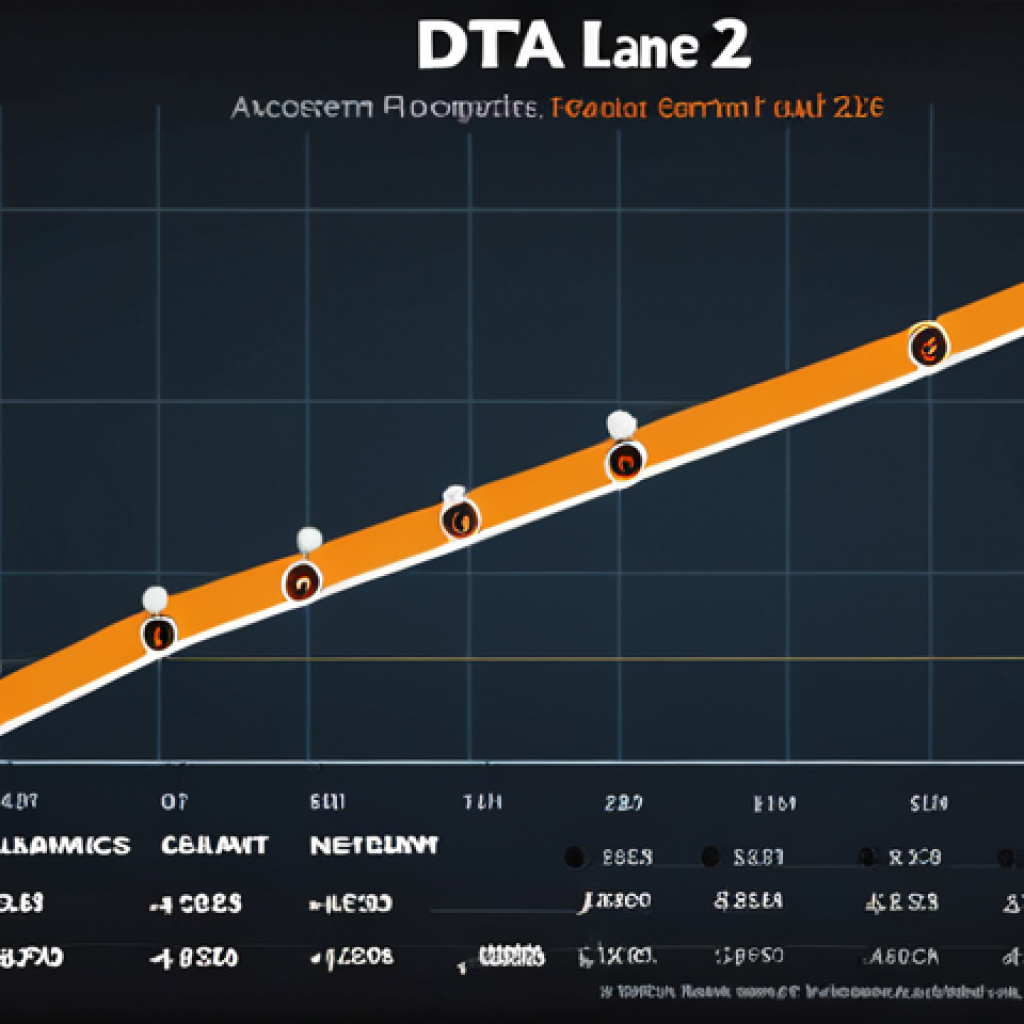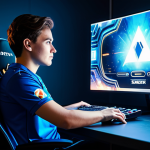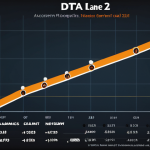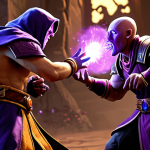Dota 2, a game of epic proportions, where every decision, every click, can swing the tide of battle. But how do you truly dissect a match, learn from your mistakes, and climb that MMR ladder?
Replay analysis, my friend, is the key. Forget just watching passively; we’re talking about in-depth examination, frame-by-frame breakdowns, and understanding the ‘why’ behind every play.
Lately, the trend is all about utilizing advanced tools and overlays within the game itself, giving you real-time insights as you review. This isn’t just about blaming your teammates; it’s about identifying your own shortcomings and turning them into strengths.
Trust me, I’ve spent countless hours combing through replays, and the insights you gain are invaluable. It’s an investment in your future Dota 2 self.
Let’s dig in and explore how to accurately analyze Dota 2 replays in detail below!
Unlocking Insights: Mastering the In-Game Replay Tools
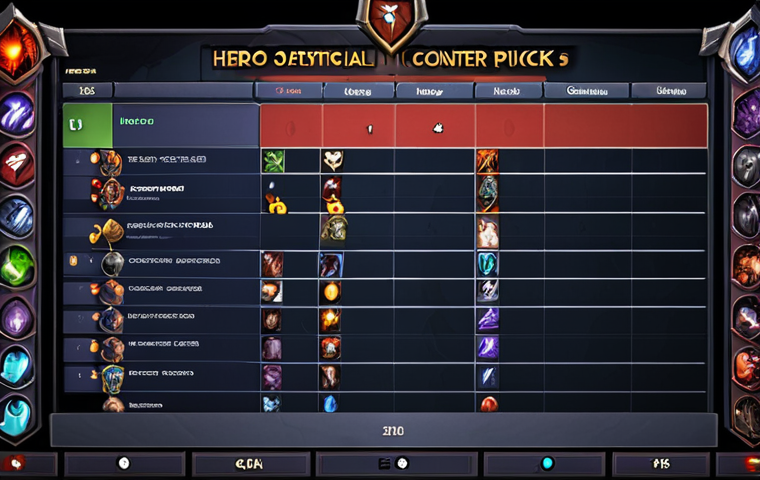
1. Diving into the Timeline: Key Moments and Critical Fights
The timeline is your best friend. Don’t just skip to the big clashes; meticulously go through the early game, paying close attention to lane dynamics, ward placements, and item timings. I’ve found that even subtle movements in the first few minutes can foreshadow later events. Look at how each player positions themselves, how they react to gank attempts, and how efficiently they farm. These small details often dictate the overall flow of the game. For example, a seemingly insignificant early death in the mid-lane can snowball into a massive advantage for the opposing team if not addressed properly. Were resources allocated to prevent this? Did the supports rotate effectively? These are the questions you need to be asking yourself as you scrub through the timeline.
2. Utilizing the Graph: Net Worth and Experience Fluctuations
The graph isn’t just a pretty visual; it’s a treasure trove of information. Observe how net worth and experience change over time for each hero. Identify the moments where one team gained a significant lead and pinpoint the actions that led to it. Was it a successful Roshan attempt? A well-executed team fight? Or perhaps a series of pick-offs that crippled the enemy’s farming potential? I remember one game where our team was dominating early, but then we threw it all away in a single, disastrous fight near their ancient. Analyzing the graph afterwards showed a clear turning point right after that fight, with their net worth skyrocketing and ours plummeting. It was a painful lesson, but one that I learned from thanks to the graph.
3. Camera Perspective is Key: Focusing on Individual Players
Don’t just watch the team fights from a bird’s-eye view. Switch between player perspectives to see what each individual was doing and thinking. What items were they targeting? Were they properly utilizing their abilities? Were they communicating effectively with their team? Sometimes, a mistake might seem obvious from the outside, but when you see it from the player’s perspective, you gain a much deeper understanding of the situation. I often focus on my own perspective to see where I could have improved my positioning, item choices, or decision-making.
Deciphering the Draft: Understanding Hero Synergies and Counter-Picks
1. Spotting the Synergies: Uncovering Powerful Combinations
The draft is where games are often won or lost. Pay attention to the hero picks and bans, and try to understand the reasoning behind them. What synergies are the teams trying to create? What counters are they trying to draft? I often pause the replay after the draft and try to predict how the game will play out based on the hero compositions. For example, a team with heroes like Enigma, Crystal Maiden, and Magnus has a clear focus on team fight control, while a team with heroes like Anti-Mage, Queen of Pain, and Nature’s Prophet is likely aiming for a split-push strategy. Understanding these intentions is crucial for predicting the game’s flow.
2. Identifying the Counters: Exploiting Weaknesses in the Enemy Lineup
Every hero has weaknesses, and a good draft will exploit those weaknesses. Look for situations where one team has drafted a hard counter to a key hero on the other team. For example, picking a hero like Shadow Demon against a Bristleback can significantly reduce the hero’s effectiveness in team fights. Understanding these counter-picks is essential for learning how to draft more effectively yourself. I’ve learned to anticipate counter-picks and adjust my hero selection accordingly, which has significantly improved my win rate.
3. Analyzing the Bans: Recognizing Priority Heroes and Strategic Denials
The ban phase is just as important as the pick phase. Pay attention to the heroes that are being banned and try to understand why. Are they banning powerful meta heroes? Are they banning heroes that counter their own picks? Or are they simply trying to deny the enemy team a specific strategy? The ban phase can reveal a lot about a team’s intentions and their understanding of the current meta. I’ve started paying closer attention to the ban phase, and it’s helped me to better understand the strategies that other teams are employing.
Analyzing Individual Performance: Focus on Improvement
1. Evaluating Laning Efficiency: Last Hits, Denies, and Harassment
Laning is the foundation of any Dota 2 game. Review your own laning phase, focusing on last hits, denies, and harassment. Were you able to secure a good farm? Did you deny enough creeps to hinder the enemy’s farm? Did you effectively harass the enemy without putting yourself at risk? Even small improvements in your laning phase can have a significant impact on your overall game. I’ve been focusing on improving my last hitting skills, and it’s made a noticeable difference in my ability to secure early game advantages.
2. Assessing Item Choices: Optimizing Builds for Specific Situations
Item choices are crucial for adapting to the ever-changing flow of the game. Review your item build and consider whether you made the right choices at the right time. Did you rush a Battle Fury when you should have prioritized survivability? Did you build a Black King Bar when the enemy team had primarily physical damage? Evaluating your item choices is essential for learning how to adapt to different situations and optimize your build for maximum effectiveness. I remember one game where I built a Radiance on Naga Siren, thinking it would be a good farming tool, but it ended up being completely useless in team fights. I learned my lesson that day.
3. Spotting Positioning Mistakes: Identifying Vulnerable Spots and Improving Safety
Positioning is key to survival in Dota 2. Review your positioning during team fights and identify any mistakes you made. Were you too far forward? Were you caught out of position? Were you properly utilizing high ground? Improving your positioning can significantly increase your survivability and your ability to contribute to team fights. I often watch replays from the perspective of professional players to see how they position themselves in different situations, and it’s helped me to improve my own positioning significantly.
Team Fight Breakdown: Understanding Coordination and Execution
1. Ability Usage Analysis: Optimizing Skill Sequencing and Timing
Team fights are chaotic, but they’re also a test of skill and coordination. Review your ability usage during team fights and identify any mistakes you made. Did you waste your ultimate on a low-priority target? Did you use your stun at the wrong time? Did you properly sequence your abilities to maximize their effectiveness? Optimizing your ability usage is essential for winning team fights. I’ve been practicing my ability sequencing in demo mode, and it’s helped me to react more quickly and effectively in real games.
2. Target Prioritization: Focusing on High-Value Heroes
Knowing who to target in a team fight is crucial for success. Review your target prioritization and consider whether you focused on the right heroes. Were you focusing on the enemy carry? Were you targeting the supports who were enabling their team? Or were you simply attacking whoever was closest to you? Prioritizing high-value targets can significantly increase your chances of winning a team fight. I try to identify the key threats on the enemy team before each team fight and focus my attacks accordingly.
3. Communication Evaluation: Assessing Clarity and Effectiveness
Communication is essential for coordinating with your team. Review your communication during team fights and assess its clarity and effectiveness. Were you communicating your intentions clearly? Were you listening to your teammates? Were you providing useful information? Improving your communication can significantly enhance your team’s coordination and increase your chances of winning team fights. I’ve been trying to be more vocal in my games, and it’s helped my team to make better decisions and coordinate our attacks more effectively.
Ward Placement Analysis: Maximizing Vision and Information
1. Identifying Ward Spots: Optimizing Vision for Ganks and Objective Control
Warding is essential for map control and preventing ganks. Review your ward placements and consider whether they were effective. Did you place wards in key locations to provide vision of enemy movements? Did you ward defensively to protect yourself from ganks? Did you ward offensively to control Roshan or other objectives? Optimizing your ward placements can significantly increase your team’s map awareness and reduce your vulnerability to ganks. I try to place wards in areas where they will provide the most useful information, such as near Roshan, in the enemy jungle, or in key lane entrances.
2. De-Warding Efficiency: Removing Enemy Vision and Denying Information
De-warding is just as important as warding. Review your de-warding efforts and consider whether you were effective at removing enemy vision. Did you actively search for enemy wards? Did you use sentry wards in strategic locations? Did you coordinate with your team to de-ward key areas? Removing enemy vision can significantly reduce their map awareness and make them more vulnerable to ganks. I always carry sentry wards with me and actively search for enemy wards whenever I have the opportunity.
3. Timing and Duration: Optimizing Ward Lifespan and Coverage
The timing and duration of your wards are crucial for maximizing their effectiveness. Review the timing of your ward placements and consider whether you placed them at the right time to provide the most useful information. Did you place your wards too early, causing them to expire before they were needed? Did you place them too late, missing key enemy movements? Optimizing the timing and duration of your wards can significantly increase their value. I try to anticipate enemy movements and place my wards accordingly, ensuring that they provide vision at the most critical times.
Strategic Decision-Making: Objective Control and Risk Assessment
1. Objective Prioritization: Roshan, Towers, and Barracks
Dota 2 is a game of objectives. Review your objective prioritization and consider whether you focused on the right objectives at the right time. Did you prioritize Roshan when you should have been defending your towers? Did you push for barracks when you should have been securing your lead? Optimizing your objective prioritization can significantly increase your chances of winning the game. I try to assess the current situation and prioritize the objectives that will have the greatest impact on the game’s outcome.
2. Risk vs. Reward: Balancing Aggression and Safety
Every decision in Dota 2 involves a certain level of risk. Review your risk assessment and consider whether you made the right choices. Did you take unnecessary risks that cost you the game? Did you play too passively, allowing the enemy to gain an advantage? Balancing aggression and safety is essential for making sound decisions. I try to weigh the potential rewards of each action against the potential risks before making a decision.
3. Map Awareness and Game Sense: Anticipating Enemy Movements and Intentions
Map awareness and game sense are crucial for making informed decisions. Review your map awareness and consider whether you were able to anticipate enemy movements and intentions. Did you notice the enemy team rotating to gank your lane? Did you predict their Roshan attempt? Improving your map awareness and game sense can significantly enhance your decision-making. I constantly check the minimap and try to anticipate what the enemy team is planning.
Advanced Metrics: Delving Deeper into the Data
1. APM (Actions Per Minute): Measuring Efficiency and Activity
APM, or Actions Per Minute, is a metric that measures how many actions a player performs in a minute. While not a perfect indicator of skill, it can provide insights into a player’s efficiency and activity. Higher APM often indicates that a player is actively managing their hero, issuing commands, and reacting to events on the map. However, it’s important to note that high APM doesn’t always equate to good decision-making. Spamming unnecessary actions can inflate APM without contributing to the game. When analyzing replays, I look at APM in conjunction with other metrics to get a more complete picture of a player’s performance.
2. GPM (Gold Per Minute) and XPM (Experience Per Minute): Tracking Resource Acquisition
GPM (Gold Per Minute) and XPM (Experience Per Minute) are two fundamental metrics for tracking a player’s resource acquisition. GPM reflects how efficiently a player is earning gold, while XPM reflects how efficiently they are gaining experience. These metrics are influenced by a variety of factors, including laning efficiency, farming patterns, objective control, and team fight participation. Analyzing GPM and XPM can reveal whether a player is maximizing their potential to acquire resources and progress their hero. Comparing these metrics between different players and different games can help identify areas for improvement.
3. Damage Dealt and Damage Taken: Assessing Impact in Team Fights
Damage dealt and damage taken are important metrics for assessing a player’s impact in team fights. Damage dealt measures the amount of damage a player inflicts on enemy heroes, while damage taken measures the amount of damage a player receives. These metrics can reveal whether a player is effectively contributing to team fights and whether they are positioning themselves appropriately. A high damage dealt value indicates that a player is actively engaging in team fights and dealing significant damage to the enemy team. A low damage taken value suggests that a player is positioning themselves safely and avoiding unnecessary damage. However, it’s important to consider the hero’s role when interpreting these metrics. A tank hero, for example, may be expected to take more damage than a support hero.
Here’s a table summarizing key replay analysis aspects:
| Aspect | Description | Focus Areas |
|---|---|---|
| Draft Analysis | Understanding hero picks, bans, synergies, and counters. | Synergy spotting, counter-pick identification, ban analysis. |
| Laning Phase | Evaluating laning efficiency and resource acquisition. | Last hits, denies, harassment, item choices. |
| Team Fights | Analyzing coordination, execution, and target prioritization. | Ability usage, target prioritization, communication. |
| Warding | Optimizing vision and information control. | Ward spots, de-warding, timing and duration. |
| Decision Making | Assessing strategic decisions and risk management. | Objective prioritization, risk vs. reward, map awareness. |
| Advanced Metrics | Delving deeper into the data for comprehensive insights. | APM, GPM, XPM, Damage dealt, Damage taken. |
Transforming Replay Insights into Real-World Improvement
1. Identifying Recurring Mistakes: Breaking Bad Habits
One of the most valuable benefits of replay analysis is the ability to identify recurring mistakes. Do you consistently miss last hits under tower? Do you tend to overextend in lane, leading to unnecessary deaths? Do you struggle to prioritize targets in team fights? By identifying these patterns, you can focus your practice on addressing these specific weaknesses. I recommend keeping a notebook and jotting down the mistakes you identify in each replay. Over time, you’ll start to see common themes emerge, which will help you prioritize your areas for improvement. I’ve found that simply being aware of my recurring mistakes has helped me to break many of my bad habits.
2. Targeted Practice: Focusing on Specific Areas for Improvement
Once you’ve identified your weaknesses, you can design targeted practice routines to address them. If you’re struggling with last hitting, spend time in the practice tool focusing on last hitting under different conditions. If you’re having trouble prioritizing targets in team fights, watch replays of professional games and pay close attention to how they prioritize their targets. If you’re struggling with ward placement, experiment with different ward spots and observe how they impact your vision and map control. By focusing your practice on specific areas for improvement, you can make faster progress and see more tangible results. I often spend time in demo mode practicing specific skill combinations or item timings after identifying weaknesses in my replays.
3. Seeking Feedback: Sharing Replays with Experienced Players
Sometimes, it can be difficult to objectively assess your own gameplay. That’s why it’s helpful to share your replays with experienced players and ask for their feedback. They may be able to spot mistakes that you missed or offer insights that you hadn’t considered. When seeking feedback, be sure to ask specific questions and be open to criticism. It can be tough to hear negative feedback, but it’s essential for growth. I often share my replays with my friends who are higher MMR than me, and their feedback has been invaluable in helping me to improve my game.
Unlocking the potential within those replays can truly elevate your Dota 2 game. It’s not just about watching yourself play; it’s about dissecting the game, understanding your mistakes, and formulating a plan for improvement.
Trust me, I’ve been there, making the same dumb mistakes over and over until I finally started taking the time to analyze my replays. Now, I see the game in a whole new light, and I’m confident you will too.
So, fire up those replays, get ready to learn, and start climbing that MMR ladder!
Concluding Thoughts
Dota 2 is a complex game, and mastering it takes time and dedication. However, with the right tools and the right mindset, you can significantly improve your skills and climb the MMR ladder. Replay analysis is a powerful tool that can help you identify your weaknesses, learn from your mistakes, and develop a more strategic approach to the game. So, take the time to analyze your replays, focus on your areas for improvement, and never stop learning.
Remember, even the pros analyze their replays. If they find value in it, you definitely will too! Good luck, have fun, and may your MMR always be on the rise!
Useful Information
1. Use Dota Plus Wisely: If you have Dota Plus, utilize the built-in replay analysis tools. They offer helpful insights into your laning efficiency, warding patterns, and team fight participation. It’s like having a coach built right into the game!
2. Download Pro Replays: Watching replays of professional players can be incredibly informative. Pay attention to their positioning, item builds, and decision-making. You can learn a lot just by observing how the best players in the world approach the game.
3. Record Your Own Games: Even if you don’t plan on analyzing every game, recording them is a good habit to get into. You never know when you might want to review a particularly interesting or frustrating game. Plus, you can share your epic moments with your friends!
4. Utilize Third-Party Tools: There are several third-party tools available that can enhance your replay analysis experience. These tools can provide additional stats, heatmaps, and other visualizations that can help you gain a deeper understanding of your gameplay.
5. Don’t Be Afraid to Experiment: Replay analysis is all about experimentation. Try different strategies, item builds, and warding spots, and see what works best for you. The more you experiment, the more you’ll learn about the game and your own playstyle.
Key Takeaways
Effective replay analysis requires focusing on various aspects, including draft analysis, laning phase performance, team fight dynamics, warding strategies, and decision-making processes.
Leverage tools like the timeline, graphs, and camera perspective to gain comprehensive insights.
Identify recurring mistakes to target specific areas for improvement.
Combine replay insights with targeted practice and feedback from experienced players to maximize your learning.
Transform replay analysis into real-world improvements and climb the MMR ladder.
Frequently Asked Questions (FAQ) 📖
Q: Okay, so I downloaded my replay. Now what? Just fast forward to the team fights?
A: Absolutely not! While team fights are exciting, you’ll miss crucial details. Start from the very beginning – the laning phase.
Ask yourself: Did I secure enough last hits? Was I properly harassing the enemy? Did I ward effectively?
I remember one game where I kept dying early. By watching the replay, I realized I was consistently overextending and not paying attention to the enemy’s support rotations.
That small adjustment completely changed my game. Use the in-game tools to analyze net worth over time, XP graphs, and even ward placement. Slow things down, use free camera, and see what you missed in real-time.
Seriously, it’s like having a personal Dota 2 coach whispering in your ear.
Q: There are so many stats and graphs in the replay. How do I even begin to make sense of them all?
A: I get it, it can be overwhelming! Don’t try to digest everything at once. Focus on one or two key areas each replay.
For example, if you’re playing a carry, look at your last hitting efficiency and how often you die. Are you farming efficiently, or are you just running around aimlessly?
Are you dying because you’re out of position, or because you’re not getting enough support? One time, I was convinced I was a great farmer, but the replay showed I was spending way too much time walking between camps.
By optimizing my farming routes, I significantly increased my GPM (Gold Per Minute). It is really helpful to compare those graphs to other players in your bracket.
It’ll show you the gaps in your game.
Q: Is there any way to tell what my opponents were thinking or planning?
A: While you can’t literally read their minds (sadly, Valve hasn’t implemented that feature yet!), you can infer a lot from their actions. Pay attention to their warding patterns.
Where are they placing wards, and when? This can tell you where they expect you to be and what areas of the map they’re trying to control. Also, watch their hero movements.
Are they disappearing from the lane frequently? They might be ganking. I once reviewed a replay where the enemy midlaner kept leaving lane at very specific times.
After a few minutes, I realized he was always going for the same rune and using it to gank my safelane. Knowing that, I could warn my teammate and prevent future ganks.
And don’t forget to check the chat log! Sometimes, people reveal their strategies accidentally.
📚 References
Wikipedia Encyclopedia
구글 검색 결과
구글 검색 결과
구글 검색 결과
구글 검색 결과
구글 검색 결과
